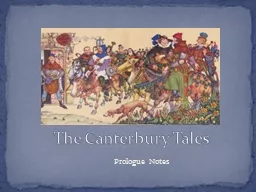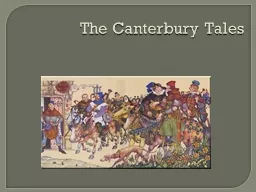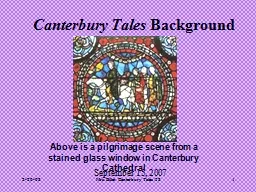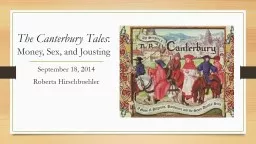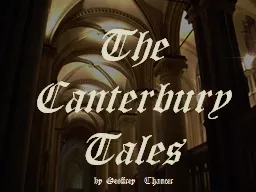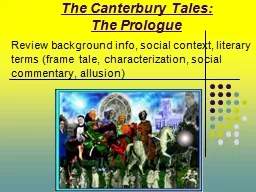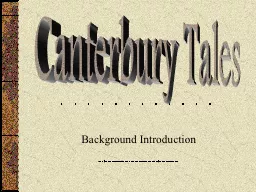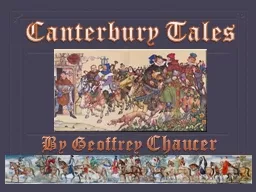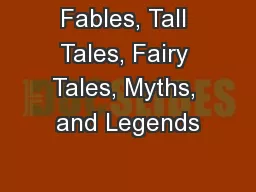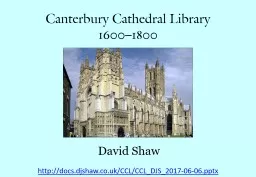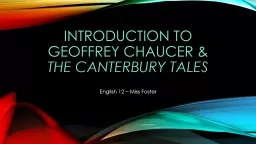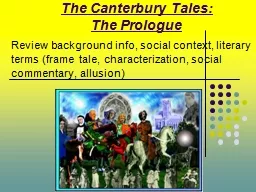PPT-Background Introduction Canterbury Tales
Author : lois-ondreau | Published Date : 2019-06-30
Geoffrey Chaucer c 13431400 Considered the father of English poetry Wrote in the vernacular common language of the people English Served as a soldier government
Presentation Embed Code
Download Presentation
Download Presentation The PPT/PDF document "Background Introduction Canterbury Tales" is the property of its rightful owner. Permission is granted to download and print the materials on this website for personal, non-commercial use only, and to display it on your personal computer provided you do not modify the materials and that you retain all copyright notices contained in the materials. By downloading content from our website, you accept the terms of this agreement.
Background Introduction Canterbury Tales: Transcript
Download Rules Of Document
"Background Introduction Canterbury Tales"The content belongs to its owner. You may download and print it for personal use, without modification, and keep all copyright notices. By downloading, you agree to these terms.
Related Documents


